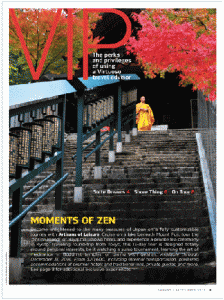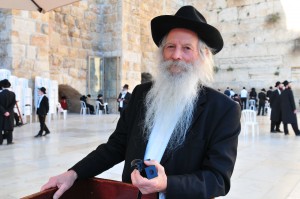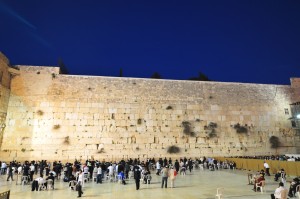It’s been five years since my visit to Miyajima, but after dusting off this image for the VIP department of August Virtuoso Traveler, I was reminded of how powerful a place this is. Located in the Seto Inland Sea, Miyajima (or “shrine island”) specializes in spirituality, abounding in both Buddhist temples and Shinto shrines, all made more beautiful in autumn when the island blazes with brilliant maples.
Wading in the water on its long heron’s legs, Miyajima’s towering O-torri gate welcomes both living pilgrims and the spirits of the deceased. On the shoreline, seemingly floating on the sea, lies Itsukushima Shrine, a massive Shinto complex dating back to the sixth century. At Daisho-in Temple (shown here), visitors spin prayer wheels, light candles, then slip off to some other world during an intense meditation session where monks beat drums and chant sutras in Sanskrit. You can visit this realm more readily via my photo gallery.
The above VIP page was designed by my close friend and colleague, Jay Carskadden, an artist of many talents (among them: painting, web and graphic design, and metalsmithing – incidentally, she also designed this website and the engagement ring that I gave to my wife, Adrienne, on this same trip). Jay works tirelessly to help produce Virtuoso Traveler every other month, and has posted a collection of additional VIP pages on her own website. See these and some of her other design work at jaycarskadden.com. Her paintings and jewelry can be viewed at jaymetalsmith.com.




